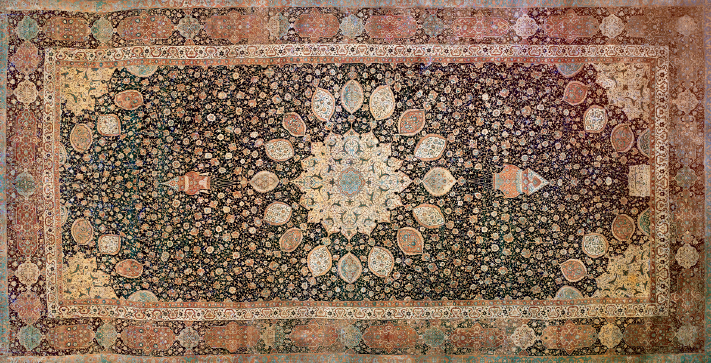Understanding World Societies:
Printed Page 494
The Arts
One of the arts all three empires shared was carpet making. Carpet designs and weaving techniques demonstrate both cultural integration and local distinctiveness. Turkic migrants carried their weaving traditions with them as they moved but also readily adopted new motifs, especially from Persia. In Safavid Persia, Shah Abbas was determined to improve his country’s export trade and built the small cottage business of carpet weaving into a national industry. Women and children were often employed as weavers, especially of the most expensive rugs, because their smaller hands could tie tinier knots.

The Persians were among the first carpet weavers of ancient times and perfected the art over thousands of years. This wool carpet, reputably from the Safavid shrine at Ardabil, is one of only three signed and dated carpets from the Safavid period, when Persian carpet making was at its zenith. Hand knotted and hand dyed, it was royally commissioned with a traditional medallion design, consisting of a central sunburst medallion surrounded by radiating pendants. Inscribed on the carpet is an ode by the fourteenth-
Another art that spread from Persia to both Ottoman and Mughal lands was miniature painting, especially for book illustration. This tradition had been enriched by the many Chinese artists brought to Persia during the Mongol period. There was also an interplay between carpets and miniature painting, with many motifs appearing in both book illustrations and carpets.
In Mughal India, as throughout the Muslim world, books were regarded as precious objects. Time, talent, and expensive materials went into their production, and they were highly coveted because they reflected wealth, learning, and power. Akbar reportedly possessed twenty-